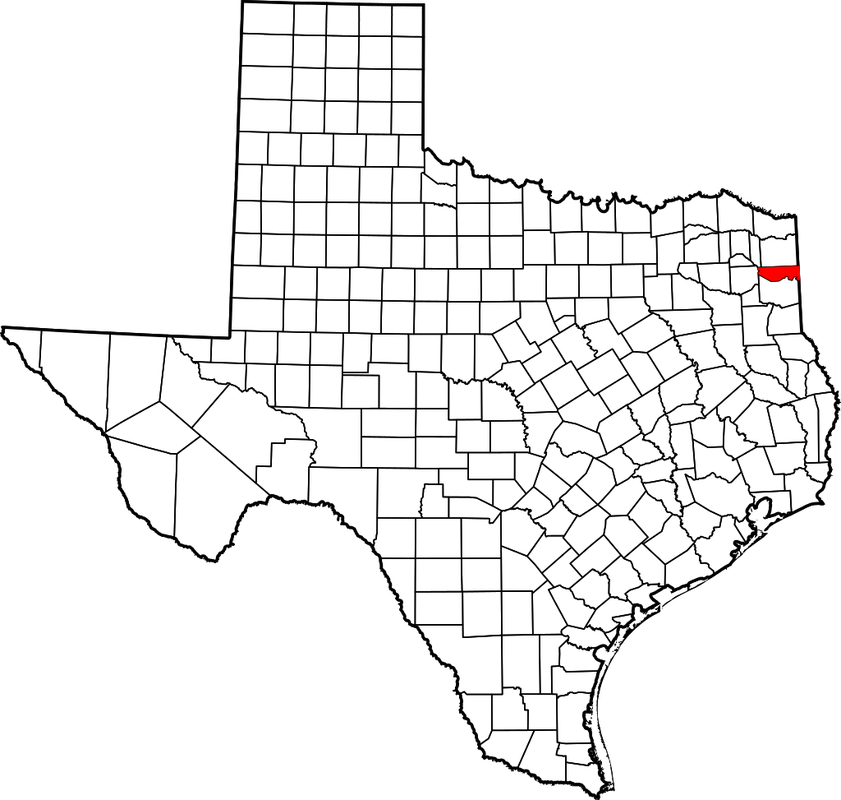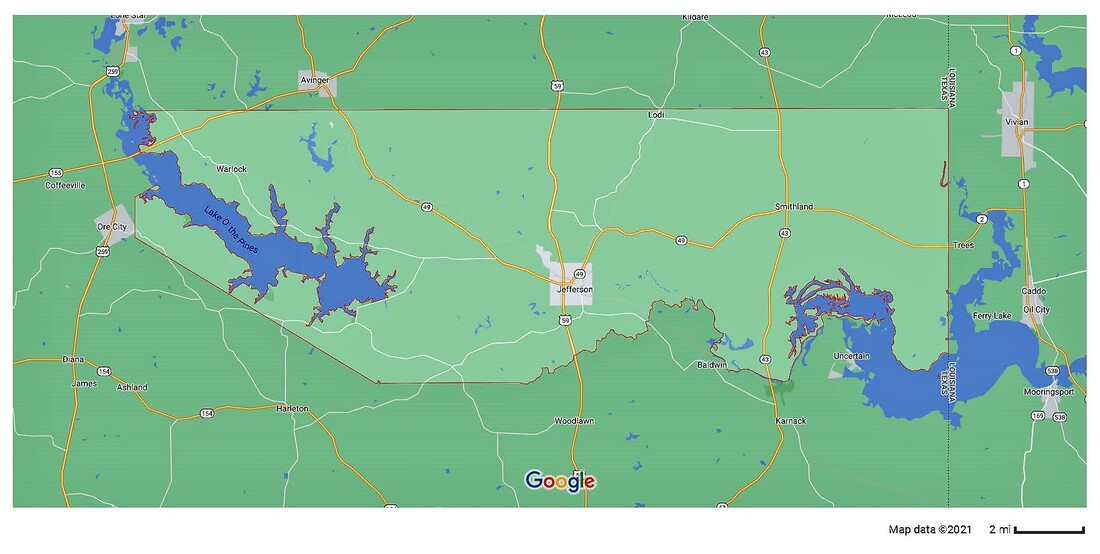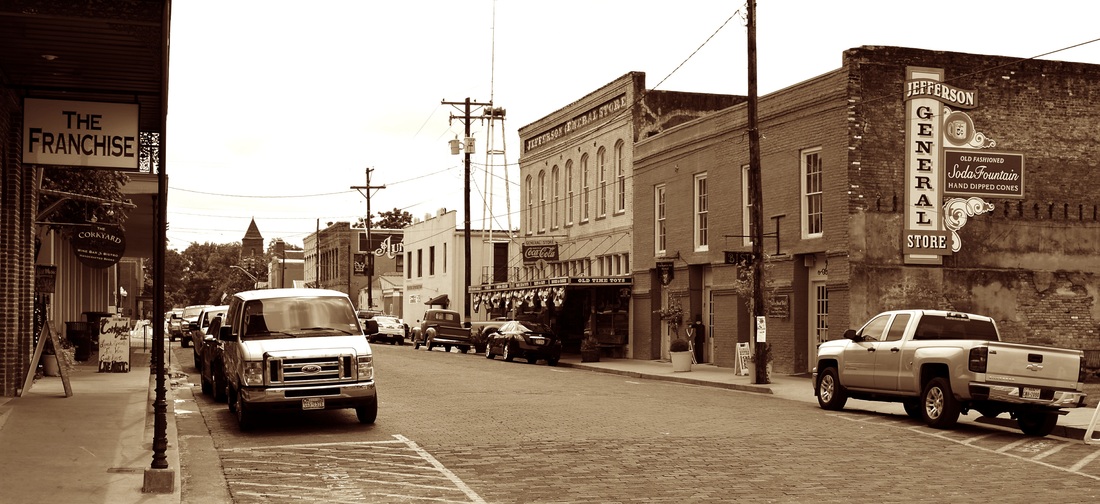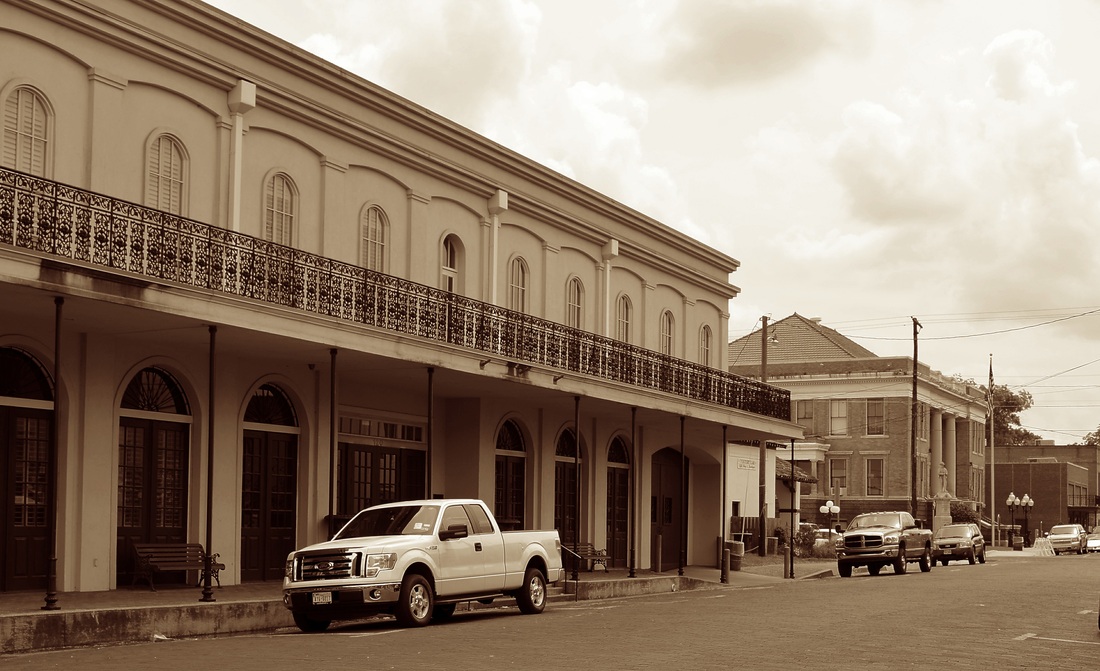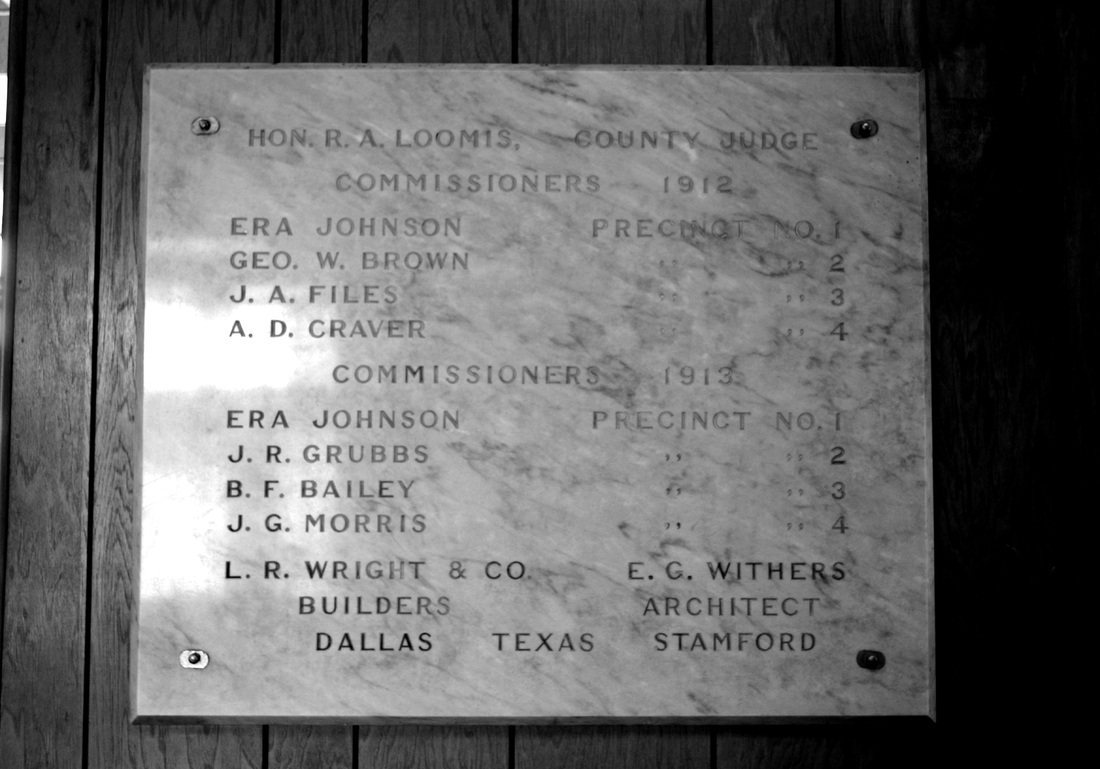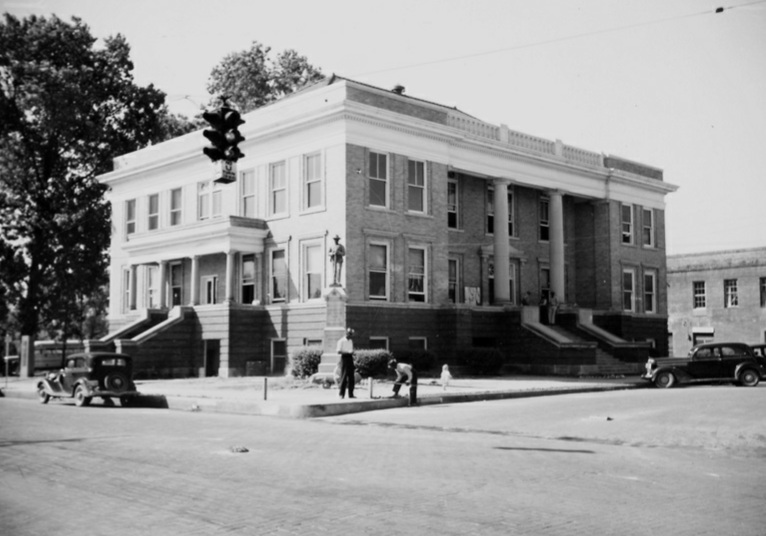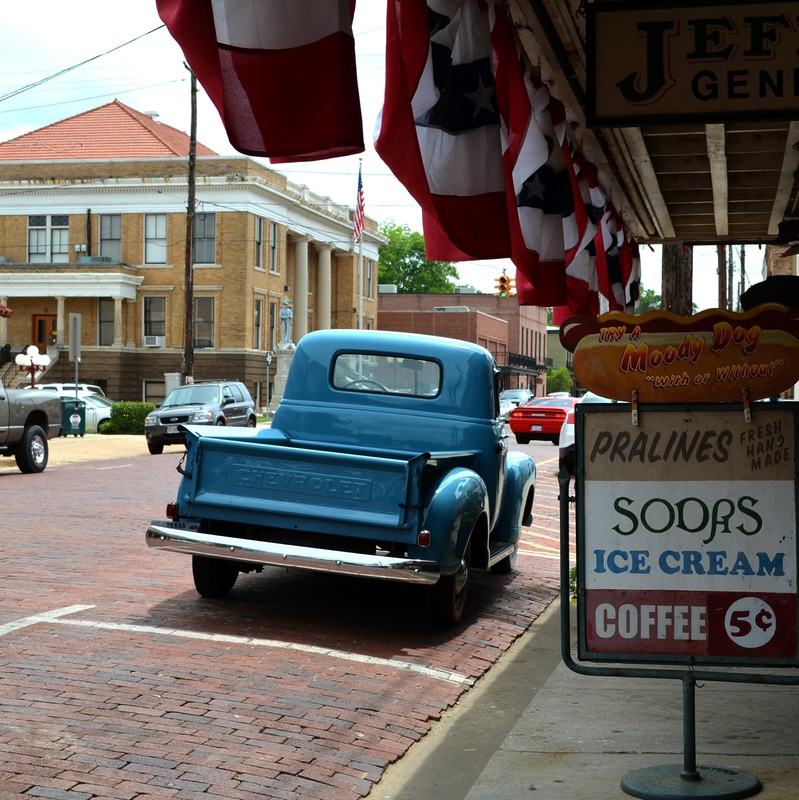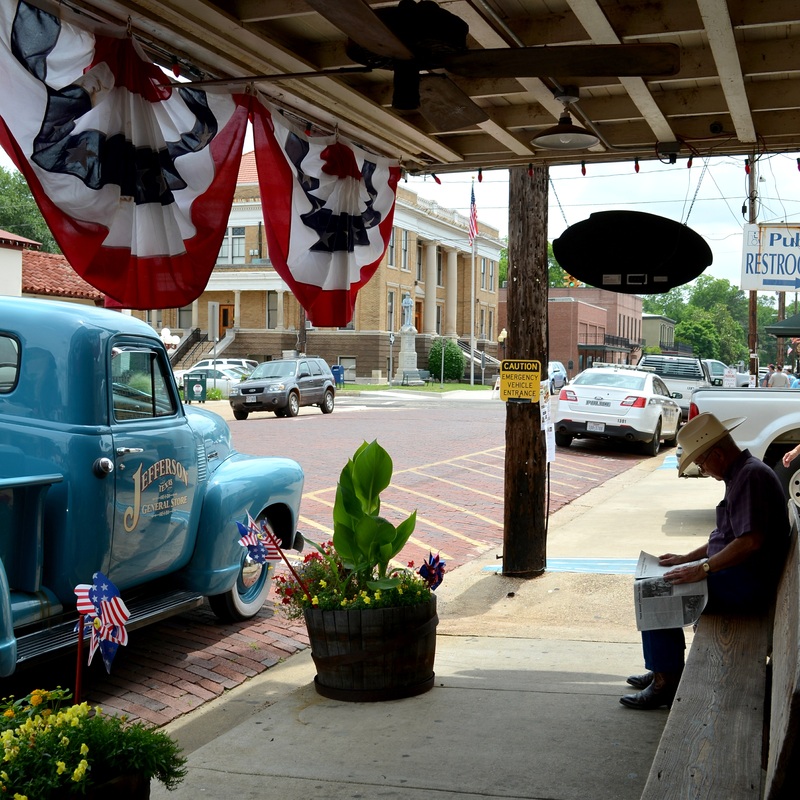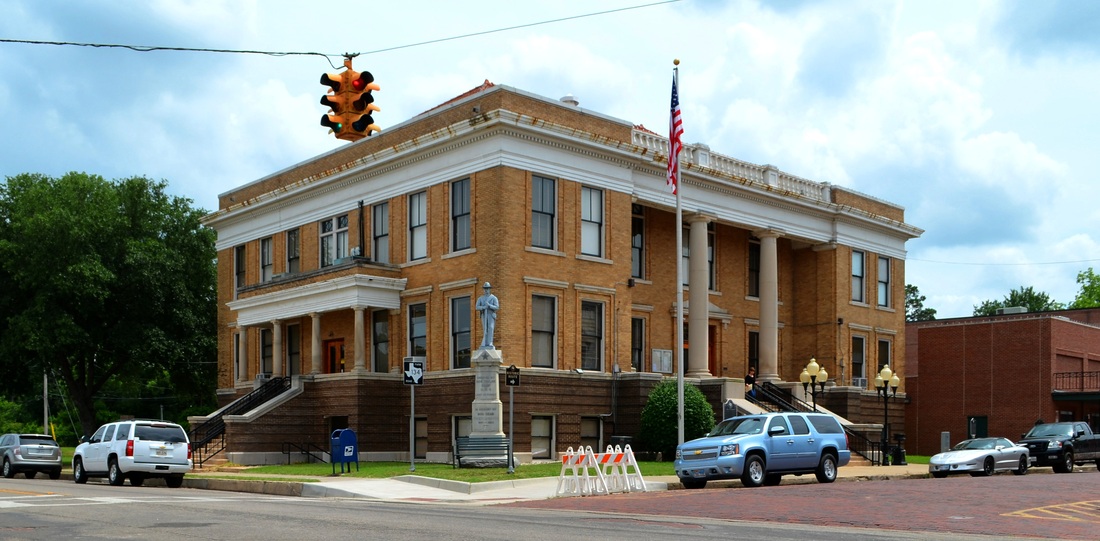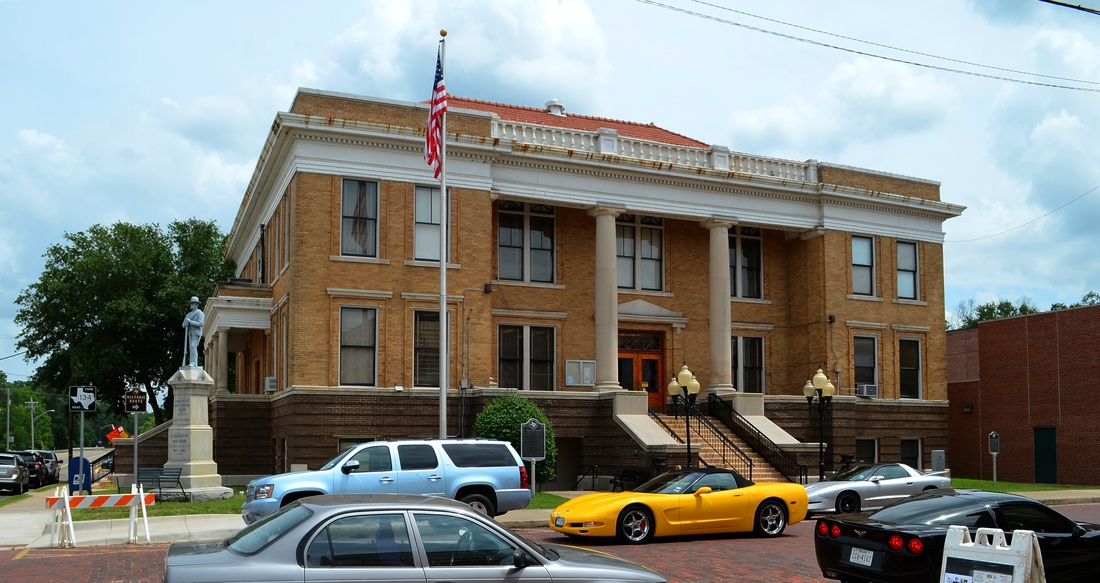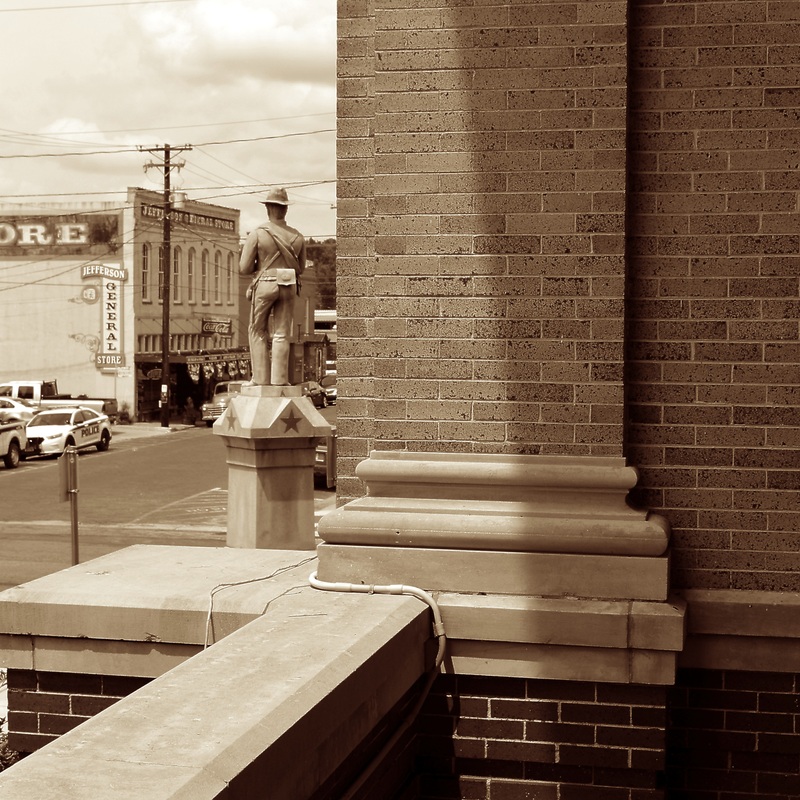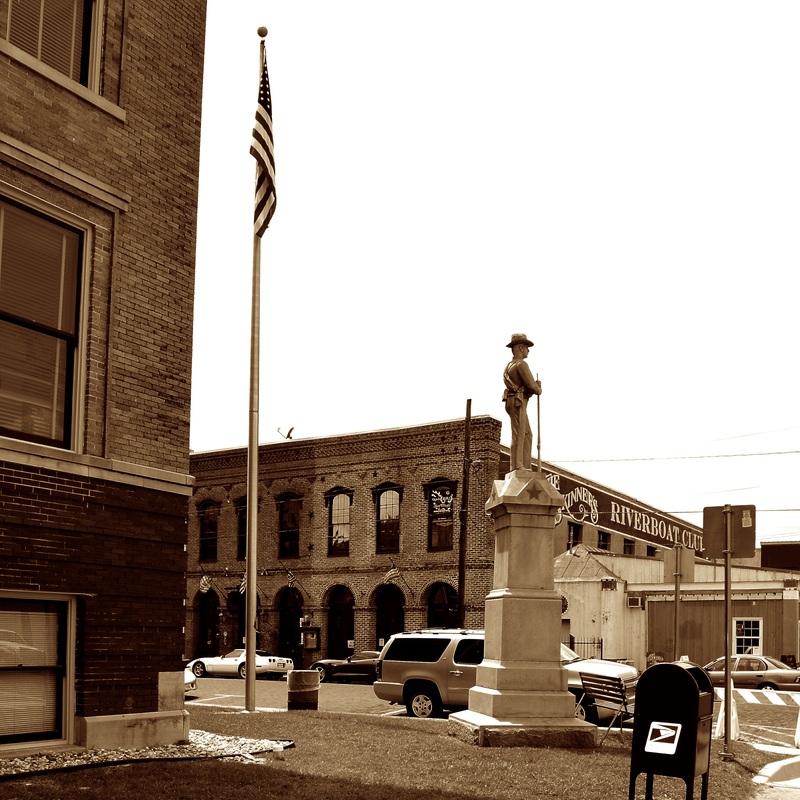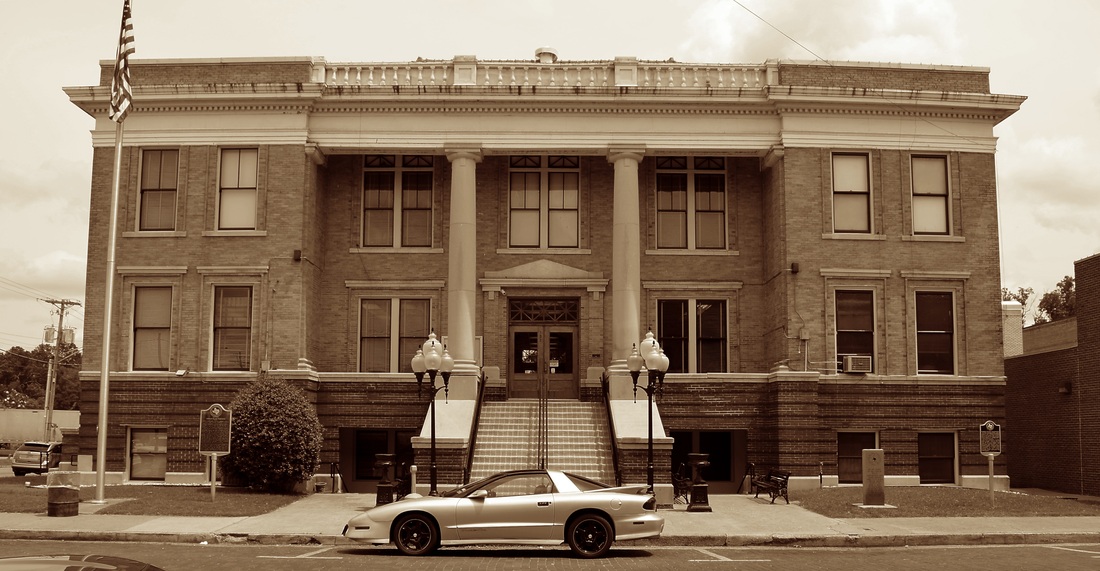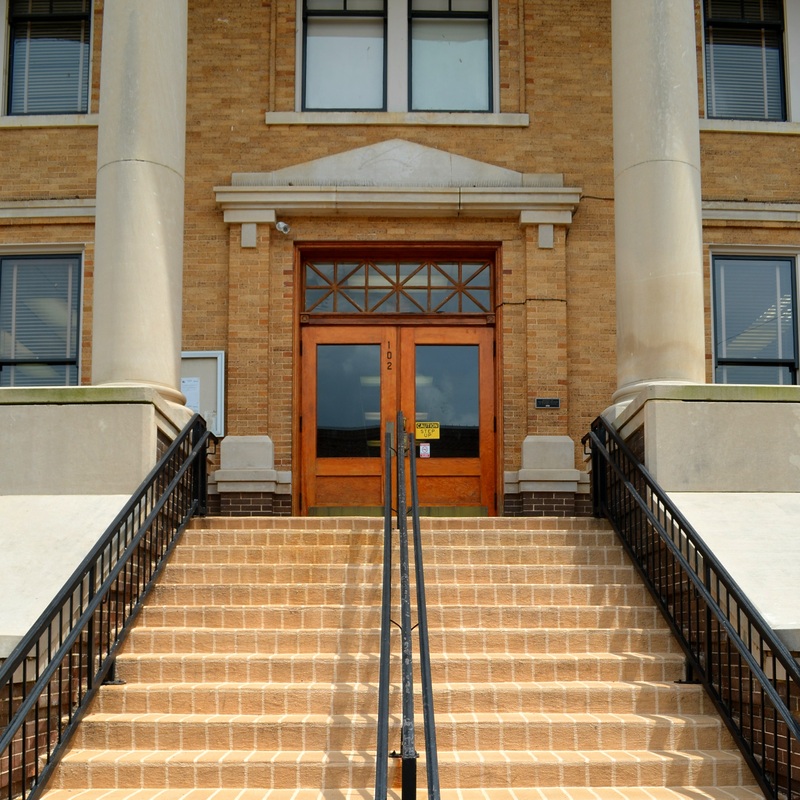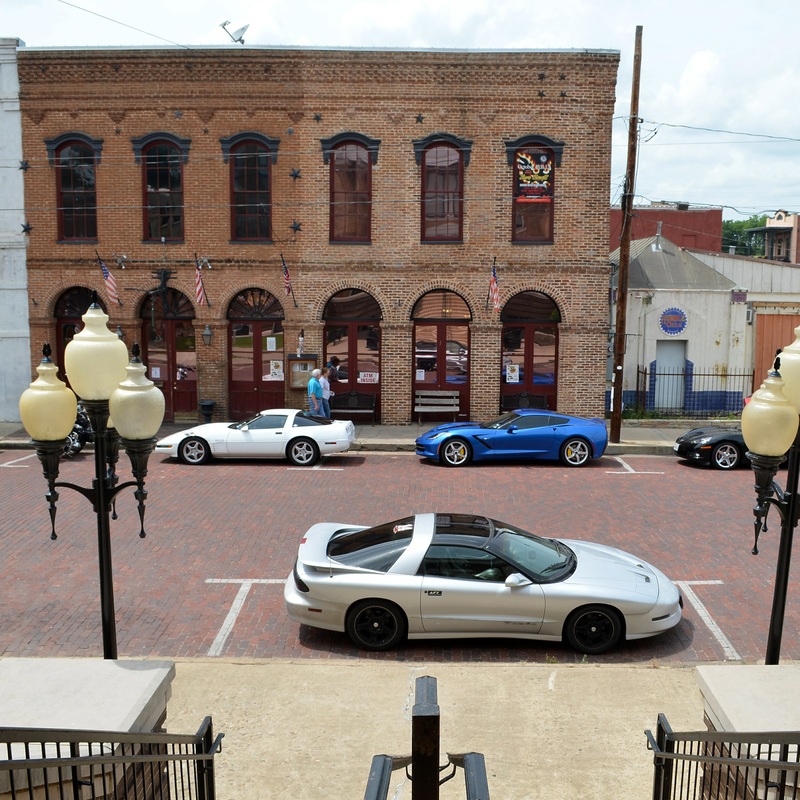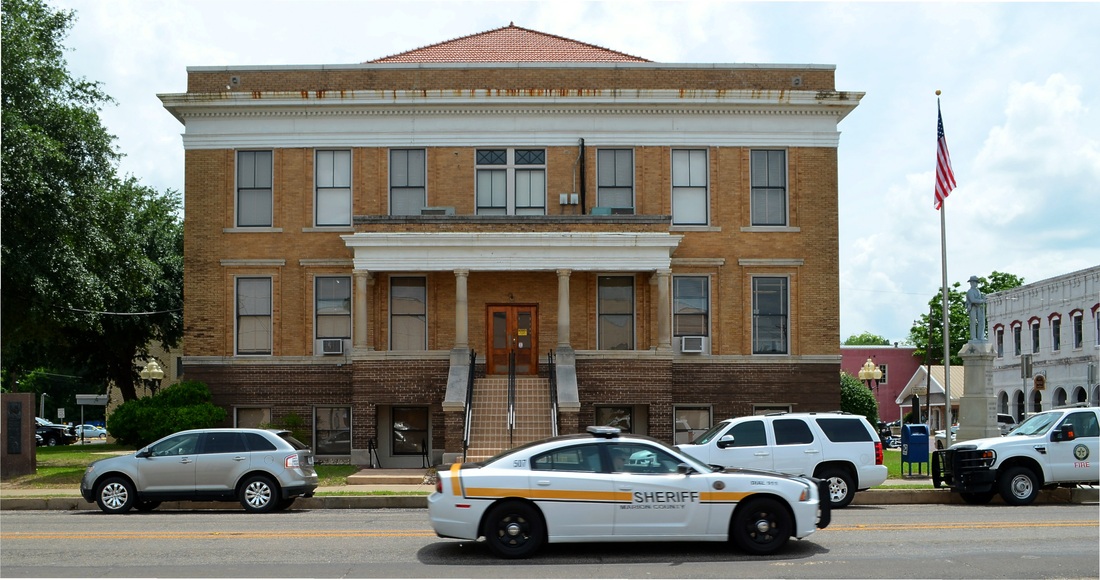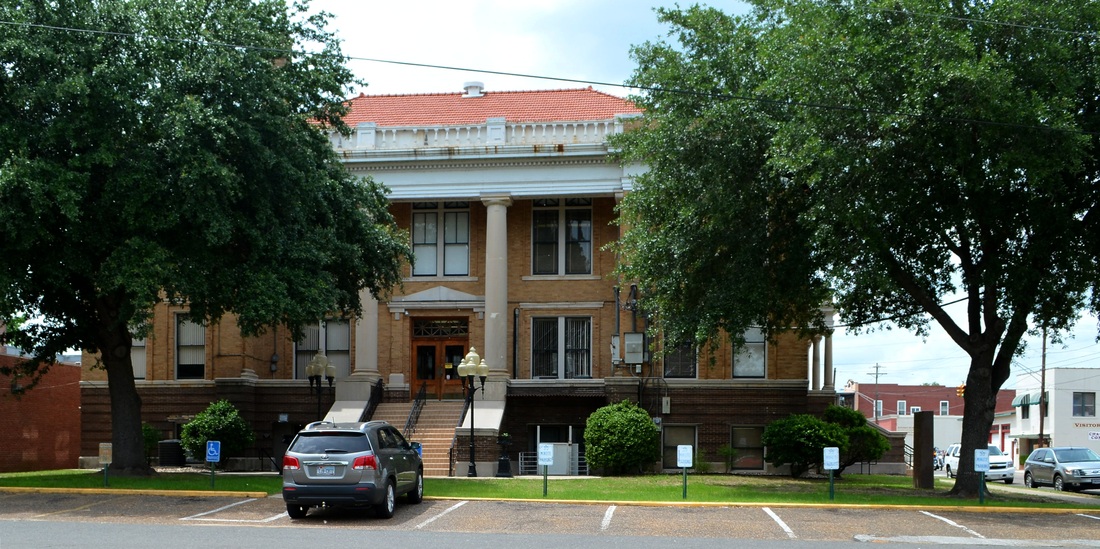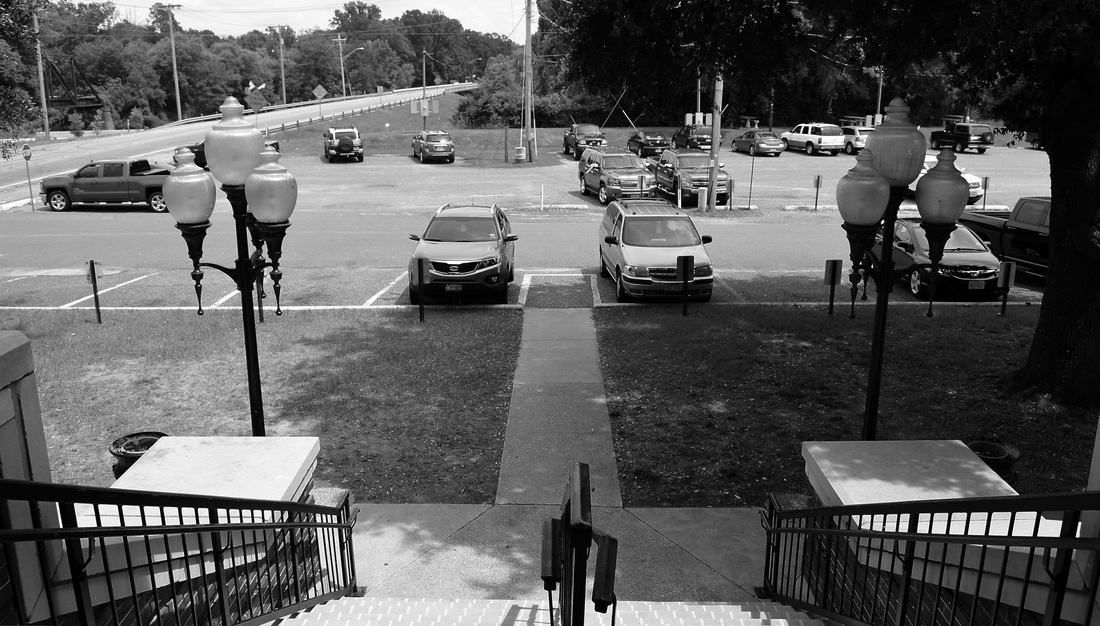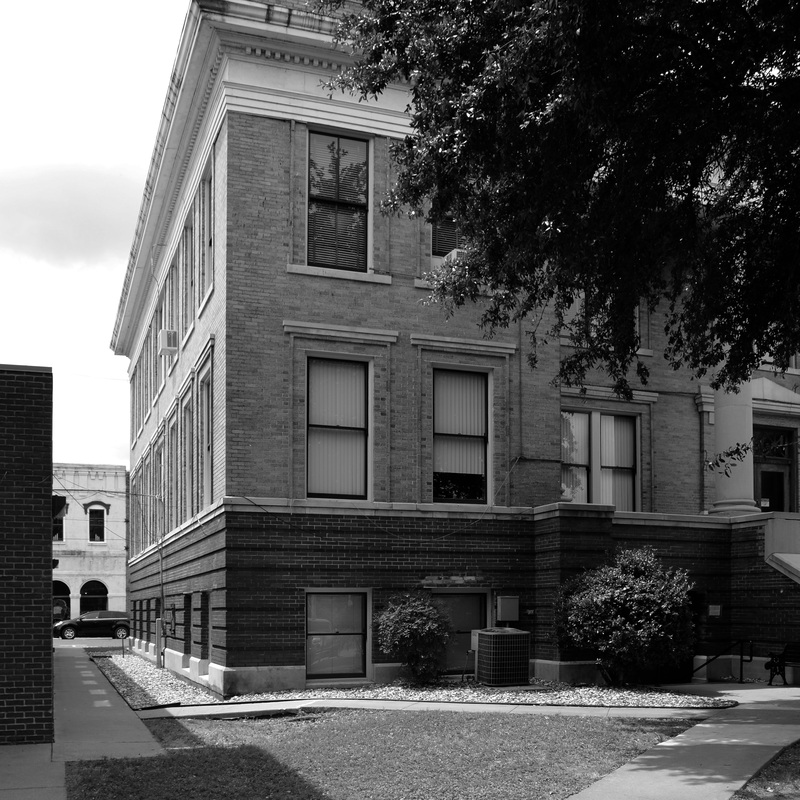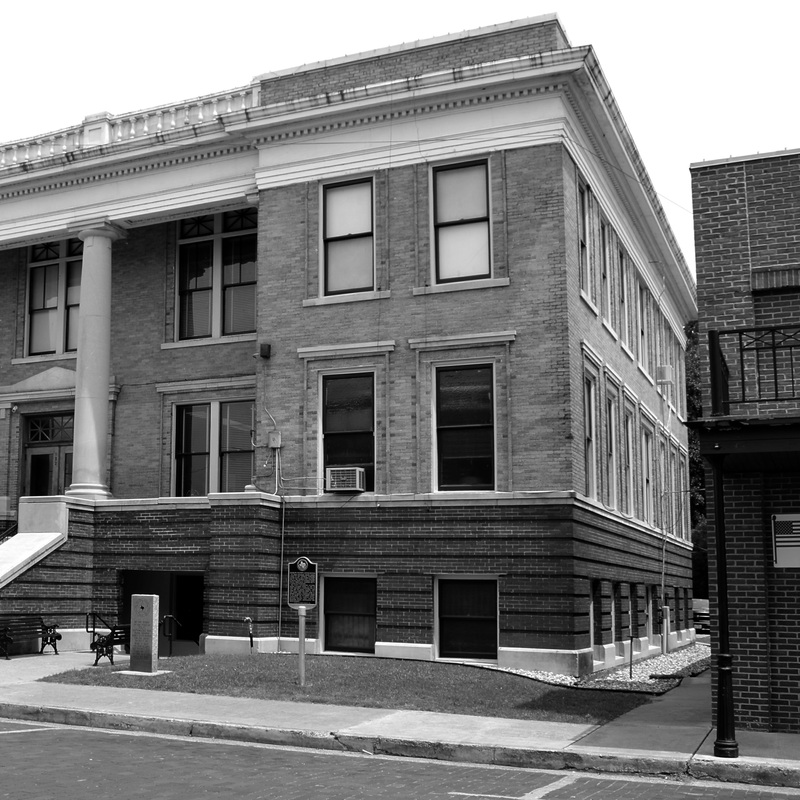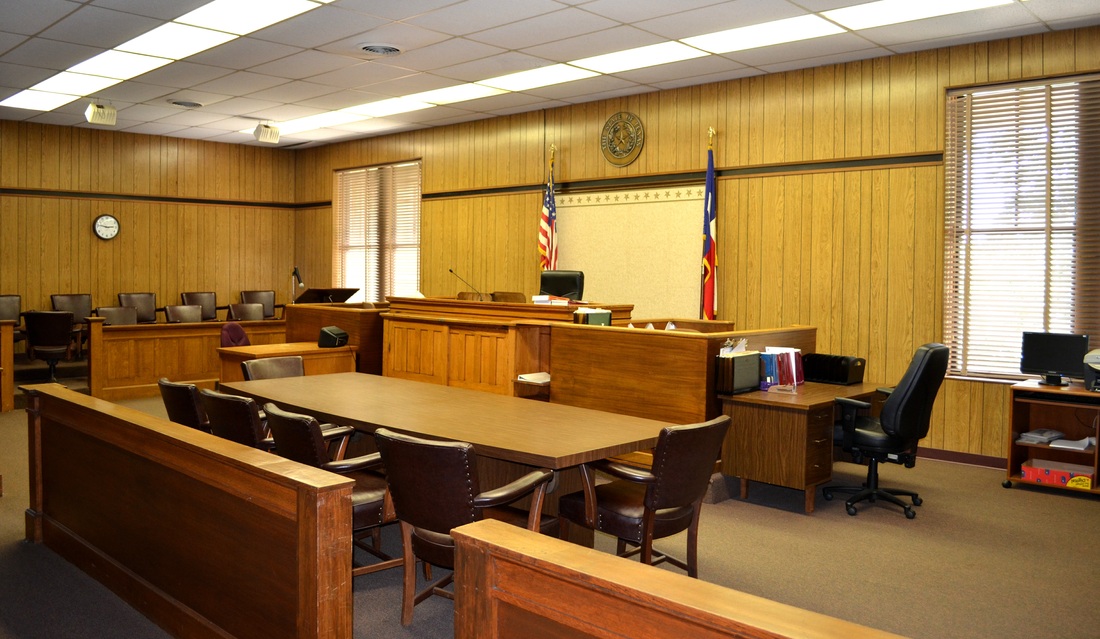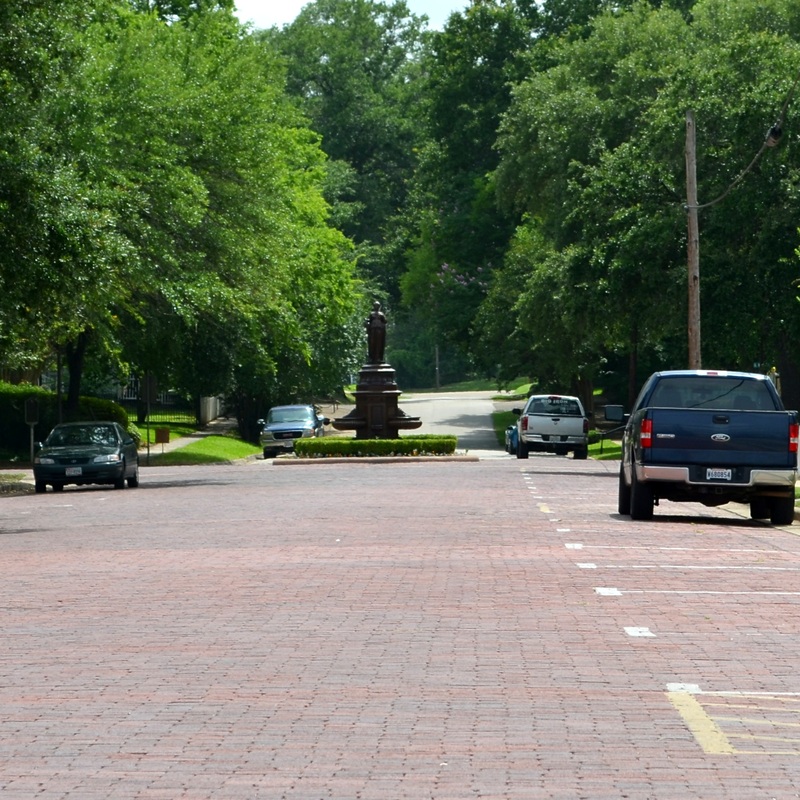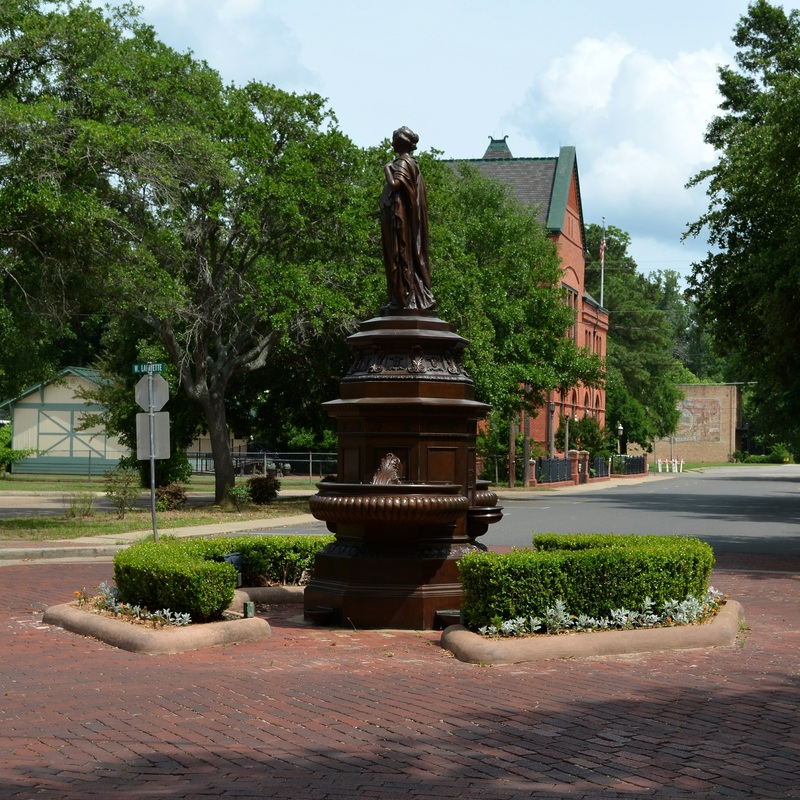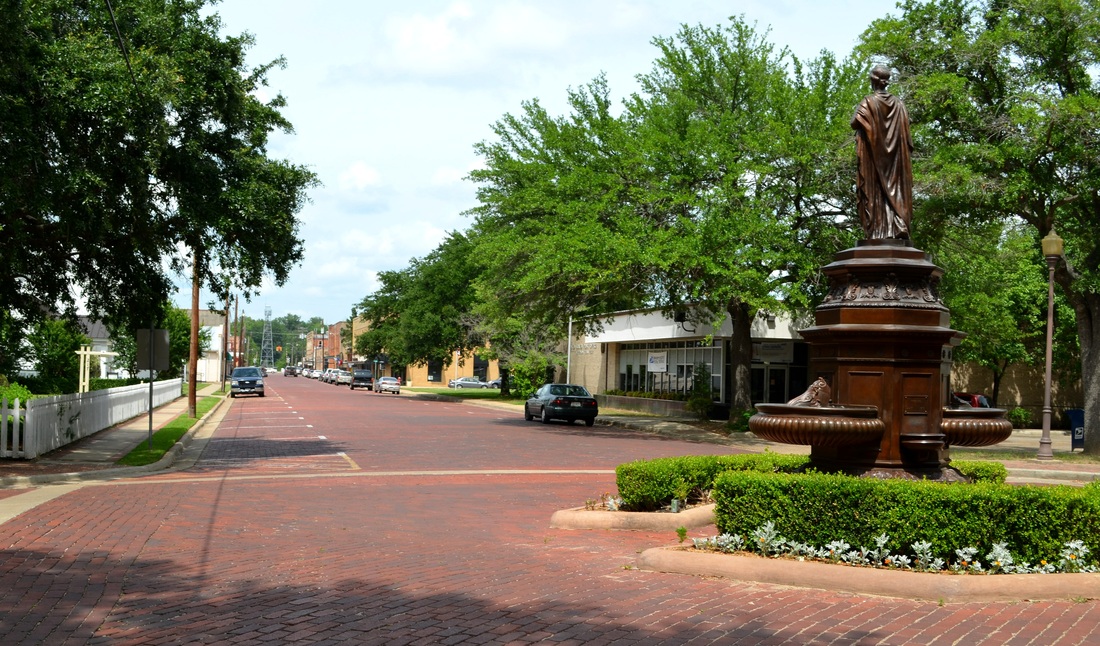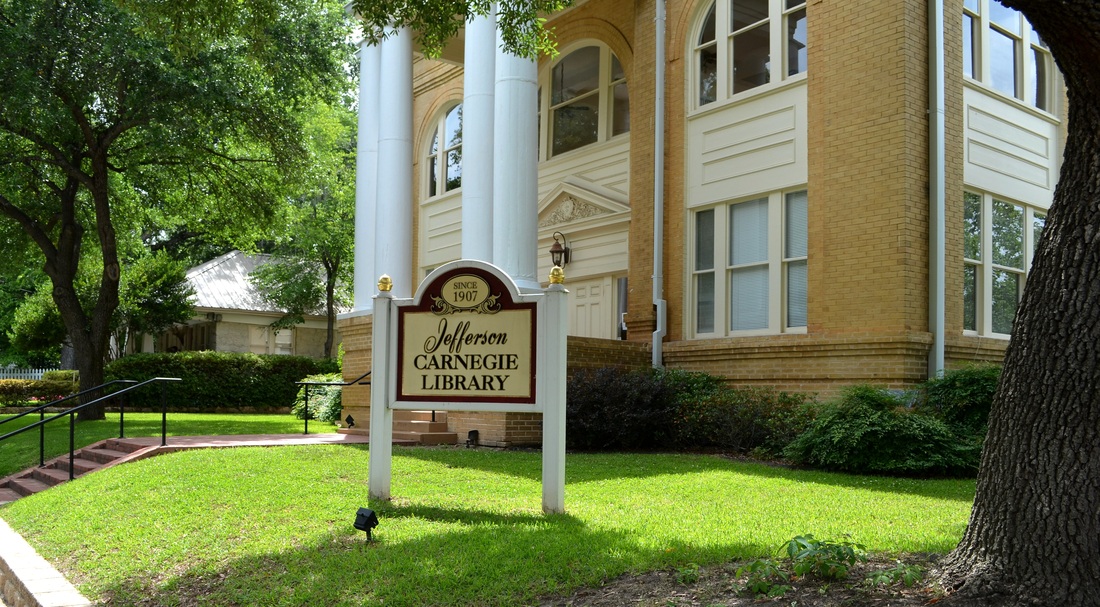209 of 254 Marion County Courthouse, Jefferson, Texas. County Population: 10,546
|
"Marion County covers 380 square miles of the dense timberlands of East Texas. The land surface is a gently rolling, rich, sandy loam, underlain by a clay foundation and cloaked by pine, cypress, and oak forests. The elevation is 200 to 500 feet above sea level. The county is drained by the Red River basin via the watershed areas of Caddo Lake, Lake o' the Pines, and Big Cypress, Little Cypress, and Black Cypress bayous.
"Marion County was demarked from the southern portion of Cass County by an act of the state legislature on February 8, 1860. Territorial additions in 1863 and 1874 extended its southern boundary to include both banks of Big Cypress Bayou. The county was named for American Revolutionary War hero Francis Marion, the 'Swamp Fox.' "[The county seat,] Jefferson, founded in the early 1840s, rapidly developed a booming river trade with New Orleans. Jefferson quickly became the favored inland Texas port for the deposit and transport of North Texas agricultural produce. Thus, Marion County became the commercial conduit for frontier Texas and did not relinquish this position until the establishment of transcontinental rail links that bypassed its wharves in the mid-1870s." Mark Howard Atkins, "MARION COUNTY," Handbook of Texas Online I visited Marion County and photographed the courthouse in Jefferson on a very muggy Friday afternoon, June 6, 2014. |
"Jefferson, in far northeast Texas, is now a drowsy courthouse town on the bend of a bayou, but was once the second largest immigration port in Texas. The integrity of the city as it was in about 1880 is almost undamaged within the boundaries defining the Jefferson Historic District. There are 56 buildings of state significance within this district. The commercial area has few modern intrusions into the unity of simple two-story brick or stuccoed nineteenth century warehouses, banks, and stores. Several of these buildings are close to the bayou where the foundations of the stone wharves are still evident. Jefferson is a unified and attractive well-preserved nineteenth century town. After forty years of intense activity, time essentially stopped in Jefferson, Texas, in the 1880s." - From the National Register narrative
